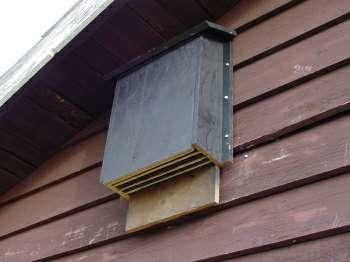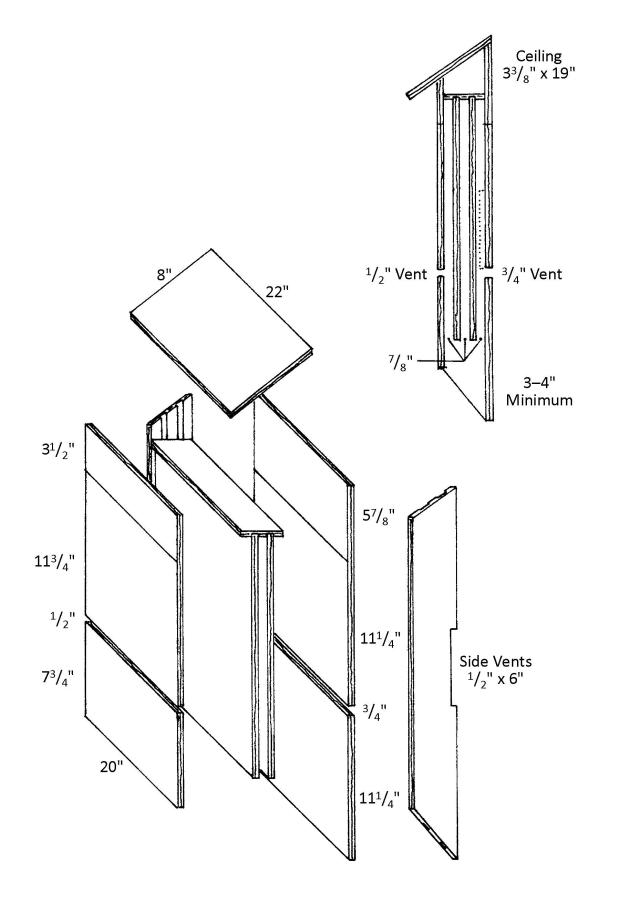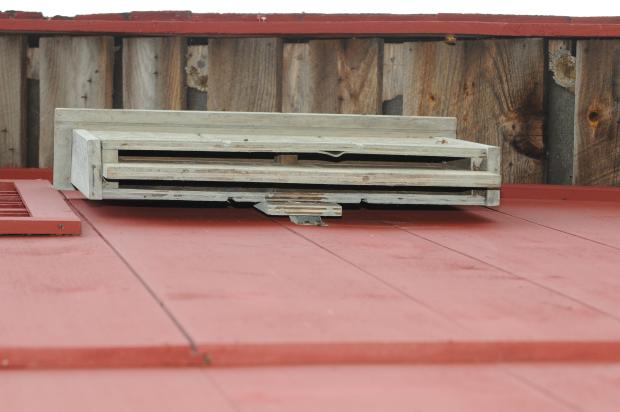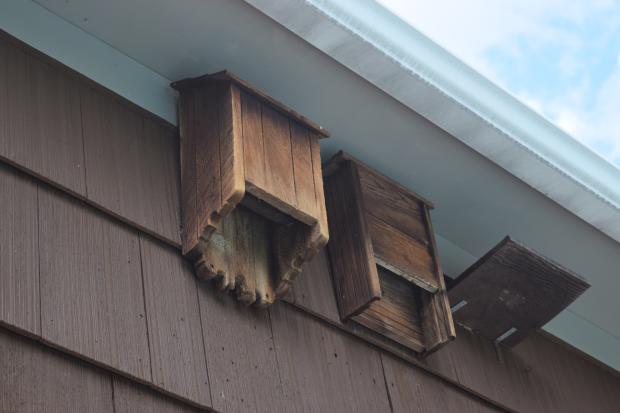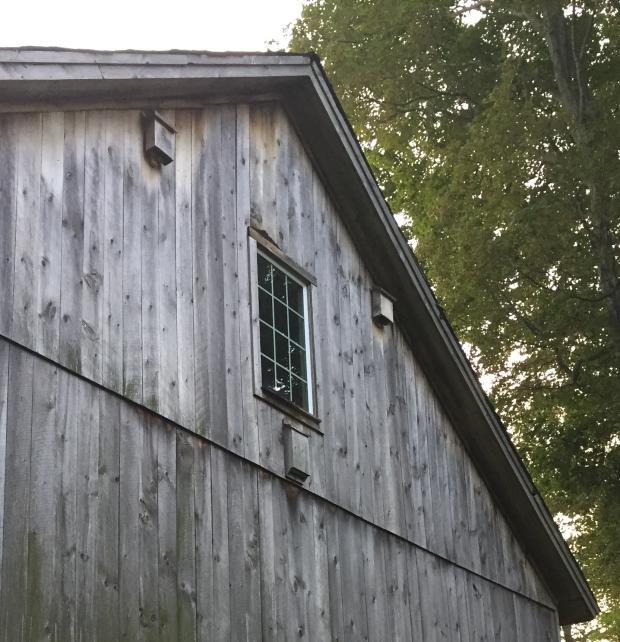Q: Are there laws or restrictions for installing a bat house?
A: No, as long as you are putting the bat house on your own property. Permission must be obtained before installing a bat house on a utility pole.
Q: A bat fell out of the bat house. What should I do?
A: If the bat seems injured, contact a local licensed wildlife rehabilitator. If it is necessary to handle the bat, wear thick work gloves. Try to place the bat as close to the bat house as possible, or off the ground and in a tree. If it is a baby bat, the mother bat will return for her pup.
Q: How many bats will occupy my bat house?
A: Depending on the size of your bat house and the number of chambers it has, your bat house may have fewer than 50 to several hundred bats.
Q: How long will it take for bats to find my bat house?
A: Bats often require a year or two to find and occupy a new bat house. Chances of earlier occupancy are increased if you follow the above guidelines, and if you live in an area of mixed habitat (i.e. farmland, woods, and water). Bats are loyal to their summer roost sites and should return yearly once they take up residency.
Q: Will guano (bat poop) pile up under the bat house?
A: It is likely that guano will accumulate over time under your bat house. However, natural elements, such as rain, sun, and wind, will naturally break down the guano. Since guano is high in nitrogen, it makes a great fertilizer. A potted plant or shallow, non-reflective plant saucer can be placed under the bat house to collect the guano and be used as fertilizer or disposed of.
Q: Will guano pose a threat to my family?
A: No. Guano does not pose any more of a threat than bird or cat poop would. It is not known to be toxic or harmful to humans, dogs, cats, or other animals.
Q: What kind of paint and how many coats should I apply to my bat house?
A: For the exterior of a bat house, apply three coats of exterior grade, water-based paint or stain. For the interior, use two coats of exterior grade, water-based stain.
Q: Is there maintenance required for bat houses?
A: A bat house that is constructed properly requires very little maintenance, but should be checked yearly for any problems. Check for cracks, leaks, warping, or exposed unpainted wood that may need minor repairs. Check for unwanted guests, like wasps, and remove any nests in late winter or early spring using a stick. New caulk and paint may be required after 3 - 5 years to prevent leaks and drafts. Any maintenance should be done in the months when bats are not present (November to early March).
Q: I have bats living in my house. How do I get them into my bat house?
A: If you are excluding bats from your home, alternative roosts (like a bat house) should be provided several months or one full season before the exclusion. In Massachusetts, attempts to exclude bats from your home can only be made in the early spring (during the month of May) or in the late summer (August 1 to October 15) when flightless young bats are not present. Please refer to the Massachusetts Homeowner's Guide to Bats for further information and advice on how to evict and relocate bats.
Q: Which bat species will occupy my bat house?
A: Little brown bats and big brown bats are the most common species to occupy bat houses in Massachusetts.
Q: How do I know how many bats are occupying my bat house?
A: To estimate the number of bats, you can do a visual inspection by looking into the bat house, count bats as they emerge around sunset, or observe the amount of guano beneath the bat house.
